Search
To search for an exact match, type the word or phrase you want in quotation marks.
A*DESK has been offering since 2002 contents about criticism and contemporary art. A*DESK has become consolidated thanks to all those who have believed in the project, all those who have followed us, debating, participating and collaborating. Many people have collaborated with A*DESK, and continue to do so. Their efforts, knowledge and belief in the project are what make it grow internationally. At A*DESK we have also generated work for over one hundred professionals in culture, from small collaborations with reviews and classes, to more prolonged and intense collaborations.
At A*DESK we believe in the need for free and universal access to culture and knowledge. We want to carry on being independent, remaining open to more ideas and opinions. If you believe in A*DESK, we need your backing to be able to continue. You can now participate in the project by supporting it. You can choose how much you want to contribute to the project.
You can decide how much you want to bring to the project.

The idea of the machine in general, and the trap in particular, compel us to consider “functions” , “uses”, and “mechanisms” in very specific ways. For instance, each machine makes us think of the forms that its users are required to adopt, or the internal forms that guarantee successive operations, as well as of the potential forms that failures or disuse would take. In the case of the art exhibition, functioning tends to be subjective and hard to predict. It is famously difficult to pin down the function of an art object. What makes traps relevant as an abstract figure of thought is their operating system, that I will analyse later on this text. It’s worth mentioning that the parallel of artist/hunter vs. spectator/prey does not operate here. I would rather suggest that artists often tend to play tricks, deceive, and set traps for themselves as part of their creative processes[1].The exhibition understood as trap-machine, by no means aims to generate a system for capturing visitors, created by the artist, but instead builds a shared environment full of deceptions, frauds, and stunts, which everyone, including authors, traverses without knowing how to proceed. Traps favour what I consider to be a productive, if fraught, relation between the viewer and the show: they expand our attention and provoke our skepticism. For any prey, the thing that matters is noticing what is trustworthy, solid, and secure, as well as being able to recognise distortion, insincerity, and fakes. The objective of trap-making here might be to build an exhibition where management has vanished and resolution becomes impossible, resulting in a situation where all that is left is the experience of being misled, and reactions to it.
machines made out of machines
Essentially, a machine is parts fitted together: a set of mechanical elements designed to take advantage of, direct, regulate, or transform energy into a desired effect. An exhibition might likewise be understood as pieces fitted together towards a specific use, which necessarily would then include some idea of “the user”. The word “machine” recalls intricate subsystems and bonds, such as assemblies, gears, motion, structuring, or joints. Machines are defined by their function ; not only they perform independently (the simplest and smallest machine does things on its own), but are also likely to either be integrated into larger systems. A machine is always a beginning, it heads vast formations. Machines express themselves in very simple and very complex ways. Machines made out machines; machines joined together to generate more elaborate actions and forms. Machinery speaks of collaboration, coordination, and substitution.
(Light and body form a type of machine). Ongoing research probes how the circadian clock affects physiological processes in almost all organisms. In humans, the biological activities affected include brain wave patterns, hormone production, and cell regulation. The disruption of these rhythms can result in insomnia, depression, cancer, and cardiovascular disease.
The shock that bright lights produce on us has been employed as a weapon in warfare and crime. If a bright light is positioned in front of the combatants at night, they are effectively blind to anything happening behind it. When the surprise attack commences, the enemy will be visually impaired. In the North, where the seasonal differences in sunlight are exaggerated to the degree of experiencing “midnight sun”, the risks associated with an excess of lighting include sunburns inside the mouth, which often happen while breathing hard heading to the South Pole. Experiences similar to the ones I just described, were probably what inspired Ángel González to write -in relation to fireworks- that, contrary to popular belief, mystery does not happen in obscurity, but in the excess of light[2].
(The functioning of a machine includes its irregularities, defects, and progressive deterioration towards its end). Our main source of energy and life has used up about half of its thermonuclear fuel. In about 5 billion years from now, it will begin to die and this will not be epic. Death for the sun is a power outage. As it grows old it will expand, and as the core runs out of hydrogen and then helium, it will contract while the outer layers will expand, cool, and become less bright. It will swell into a red giant , whose outer layers will engulf Mercury and Venus, and likely reach the Earth. In his book Psychoanalysis of Fire, Gaston Bachelard describes the process as the sun dying after binge eating, «like a leech». After the gigantic swallow, the outer layers of this star will continue to expand, and as this happens, the core will contract; the atoms in the core will fuse together, releasing energy. If it were more massive, the sun would explode as a supernova, but instead, the outer layers will drift off into space, forming a planetary nebula exposing the core. Most of its mass will go to the nebula. The remaining sun will cool and shrink; it will eventually be only a few thousand miles in diameter. The star will then be known as a “white dwarf”: a stable star with no nuclear fuel. It will radiate its left-over heat for billions of years. When its heat is all dispersed, it will be a cold, invisible, “dark black dwarf”– essentially a dead star- perhaps replete with diamonds, highly compressed carbon.
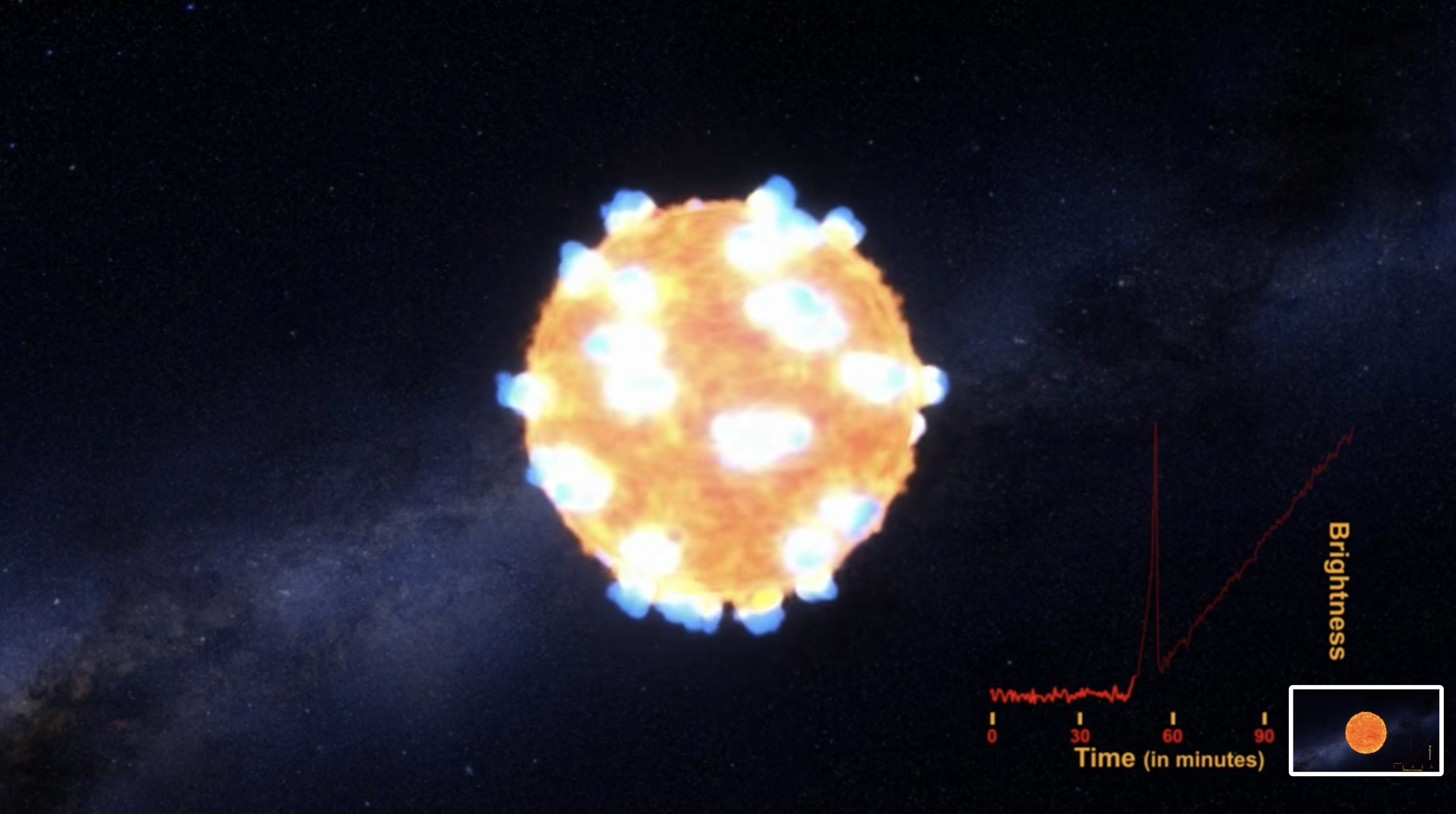

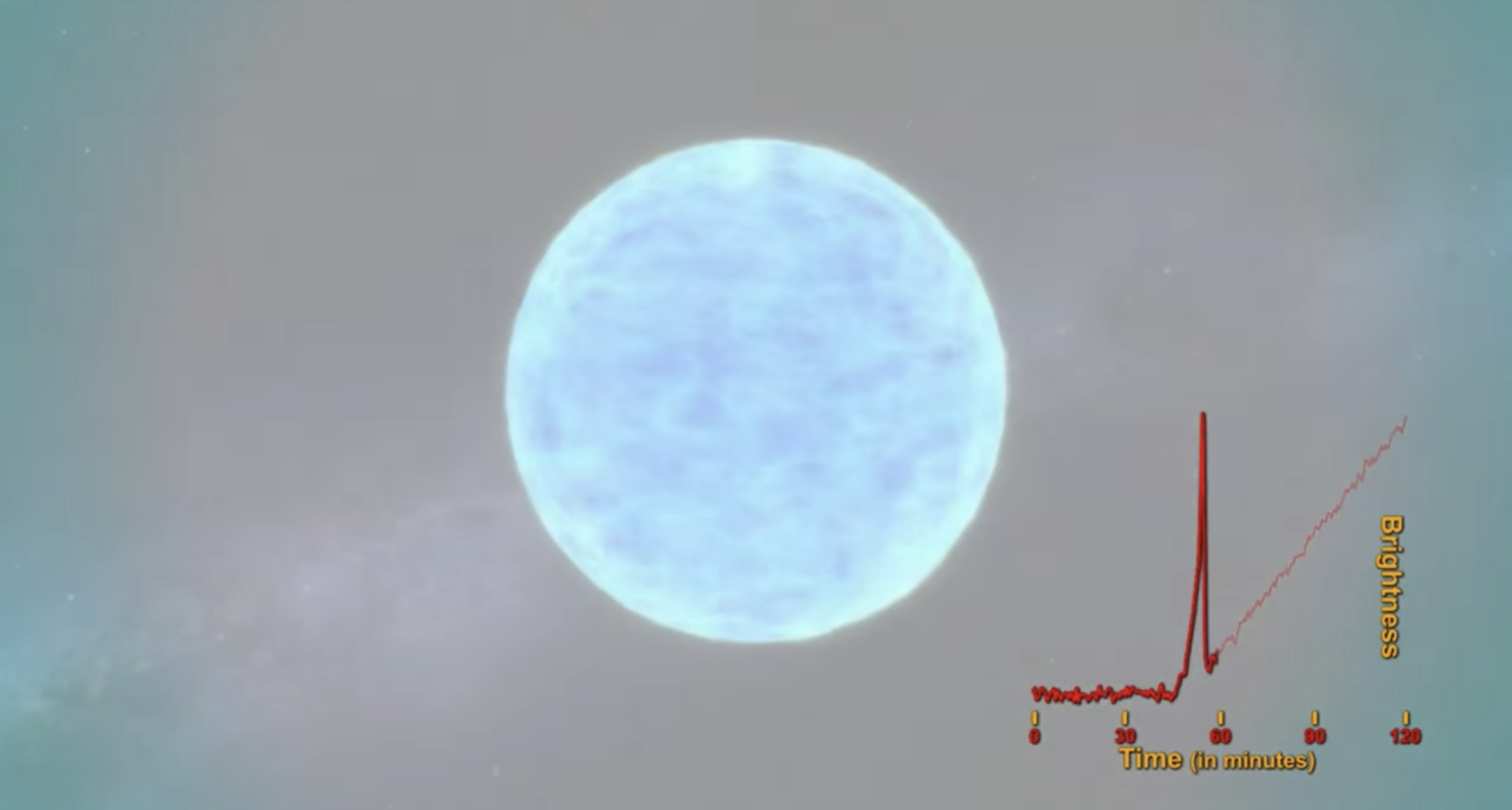
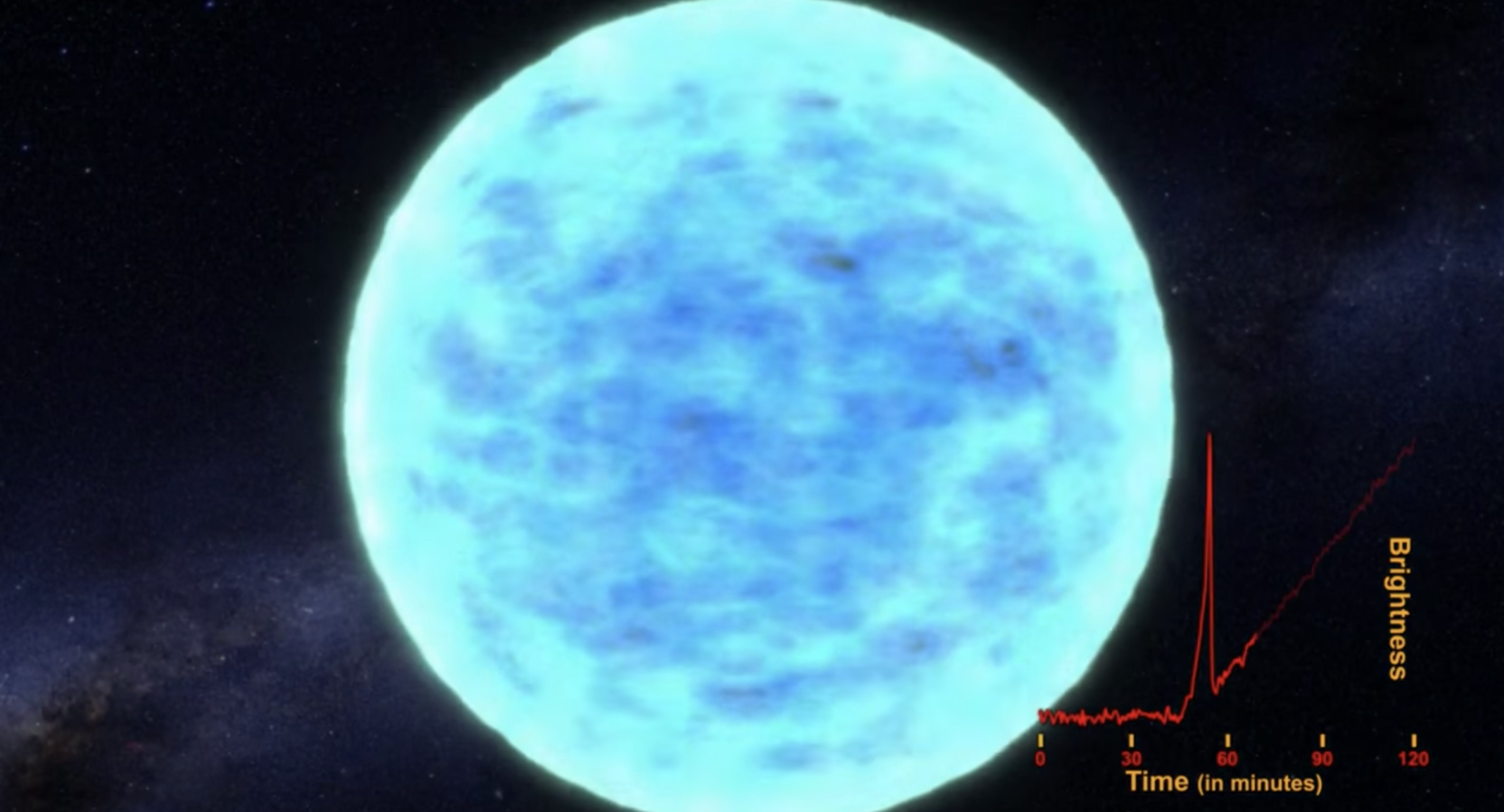
The final explosion of a supernova star, before its death captures for the first time, thanks to NASA’s Kepler space telescope. It lasted about 20 minutes. The deceased star was called KNS 2011a, it was a red giant, almost 500 times the size of the sun, located in another galaxy about 1200 million light years from Earth. A supernova means death for any planet that orbits the exploding star.
trap, human traps
A trap is commonly described as a device and tactic, intended to capture an intruder or prey. Traps can be physical objects, such as clamps, nets, trenches, or ropes, and also metaphorical things, like riddles or conundrums. Being trapped consists in being brought forcibly into a concrete world. I think of how arms trap us. Traps are generally understood as mechanisms of aggression, employed towards bodies that the trap-builder (hunter) intends to subjugate. By contrast, I suggest that traps lack ethics or intention, and can also be constructed and used, just for the sake of use. The practice of trapping, and the fact of being trapped.
The main ingredient of the trap is deception ; it operates through disguise and deceitfulness which, in turn, when the trap is successfully used, they often become disabled. Traps tend to be fleeting —an event— , and fugacity gives them shapes: the trap and its new forms of deception regularly need to be rethought, again and again. They constitute an extremely site specific mechanism, that not only blends in with the rhythms and shapes of the space in which it acts, but also serves a particular type of creature; depending on the prey ́s size or strength, for example, trapping may require different types of constructions. The form of the trap can either be recognisable, invisible, or mimic the creature that is intended to be deceived. It is a form based on behaviour; it needs to know the way this creature will move and what it desires, since trap systems often respond to temptation. Logically, these forms also depend on the deficiencies of the prey, like the incapacity of some animals to swim backwards.
Among the many forms the trap can take, I will take a closer look to its performance as a space for trapping humans. This includes strategies of coordination and juxtaposition through sensorial and conceptual elements, where time becomes a component as well, that can be altered and projected into the landscape. The deception of humans can either occur in a violent instant (like we often do to animals), or happen gradually and last for an indefinite period of time, to the extent that some human preys even forget that they were once trapped, or just do not realise it at all[3].
In amusement parks, supermarkets, or tourist sites, immersive processes aim to make clients forget that there is an outside; that they have different concerns or appetites from the ones displayed on their faces. We can distinguish two major types: ambiances that have been carefully orchestrated, like amusement parks; and areas that appeared randomly and have evolved in uncoordinated ways, such as gambling cities or stag night destinations. The key difference lies in the manner by which they negotiate with reality, and make their clients tolerate desires. While theme parks build a controlled fantasy and encourage users to perform as part of it, becoming the protagonist of the attractions or a villain; what is proposed at stag night destinations is not an alternative but the world itself. Metropolitan trap machines such as Las Vegas act on reality, and visitors experience them without a (specific) given role.
Much of the trapping ́s effectiveness relies, not on what motifs appear or in their order, but in their excess: in filling every instant with a new gag, sex scene, or fright. Addiction is produced and maintained in both territories, as the main trapping mechanism. At unplanned destinies, the rises in tone, the absence of control of all the views, errors in the staging, contradictions, and eruptions of the unexpected, become pleasant, as they are part of what a true city would be. This confusion, alongside the juxtaposition of the most disparate elements and the abuse of clichés, is part of the lesson that Venturi suggests architects and designers should take with them from Las Vegas: «It is not an order dominated by the expert and made easy for the eye. The moving eye and the moving body must work to pick out and interpret a variety of changing, juxtaposed orders.»4 Likewise, thematic parks operate like a movie; their landscapes deploy pace and frequent instants of mini action which prevent boredom from happening. It’s been said that Walt Disney was proud of his parks never being finished.

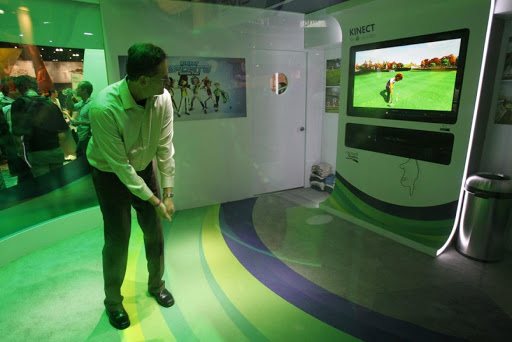
Above: Interior of Harrods, luxury mall at London, 2020.
Below: Golf Simulador by Grupo Osuna (now available).
Viewing is rarely a precise activity; most notably when it deliberately takes account of the multiple bodies that will experience it. Viewing becomes part of a strategy of trapping, and being trapped. It involves deception, as well as a shift that cannot be reversed. «Large predators indicate our preparedness to coexist with the otherness of the earth, and to recognize ourselves in mutual, ecological terms, as part of the food chain, eaten as well as eater. (…) how misguided we are to view ourselves as masters of a tamed and malleable nature.»[5] In the machinic approach, viewers act as gear units whose behaviour in relation to the exhibition (to the viewed things) will also be unclear, permanently shifting its position: from feeling ourselves as hunters, to being prey.
This text is part of a longer essay that will be published throughout 2020/2021.
5 Plumwood, V. 1999: Being Prey, from Travellers Tales: the Ultimate Journey. Richard Sterling Ed. The author wrote this essay as a reflection after being attacked by a crocodile in Kakadu (Australia).
[1] The basque artist Jorge Oteiza referred to artists practice as “trap makers”. In Basque, the word “art” means “trap”. Oteiza suggested that in Prehistoric times the art practice was used to both hunt animals and spirits.
[2] González, A. 2007: Pintar Sin Tener Ni Idea y Otros Ensayos Sobre Arte. Madrid: Ediciones Asimétricas
[3] At Radio City Music Hall, as early as the 1930s, conventional use of air conditioning (which expensive installations impressed Le Corbusier), is questioned, and it’s expansion is considered, by the possibility of adding hallucinogenic gases to the theater atmosphere. Thus, a small amount of gas could put the public in an euphoric state. In fact, for a short time, ozone was injected into the theater’s air conditioning. Koolhaas, R. (1994): Delirious New York , Ed. 010 Publishers, Rotterdam, 1994, p.210-1.
[4] Venturi, R. & Izenour S. & Scott Brown D. 1972: Learning from Las Vegas: The Forgotten Symbolism of Architectural Form. Cambridge, Ma.: MIT Press.
[5] Plumwood, V. 1999: Being Prey, from Travellers Tales: the Ultimate Journey. Richard Sterling Ed. La autora escribió este ensayo como reflexión tras el ataque de un cocodrilo en Kakadu (Australia), que casi le deja sin vida.
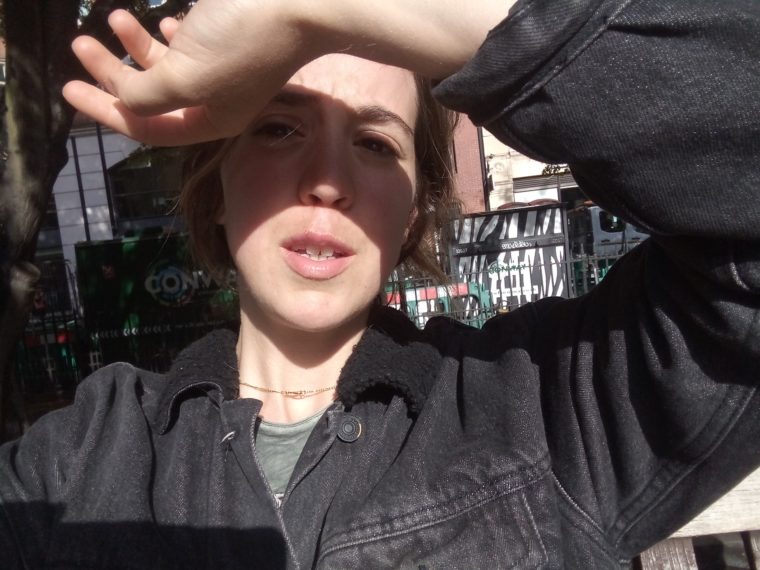
Esther Gatón is a visual artist. Her work hangs between thinking what forms make us do; and what, with our materials and ways, we are doing to each space. She uses sculpture, video, drawings, and text.
+ info: esthergaton.net
"A desk is a dangerous place from which to watch the world" (John Le Carré)